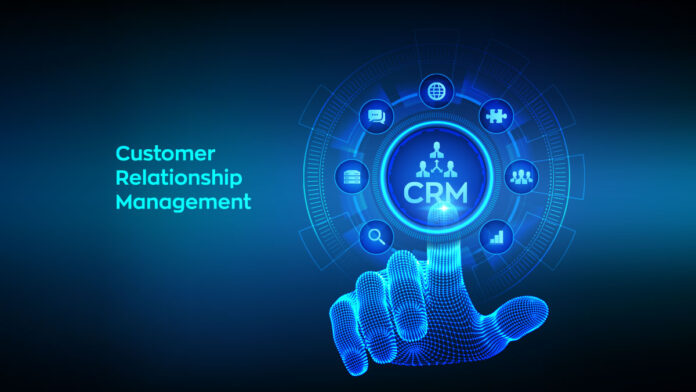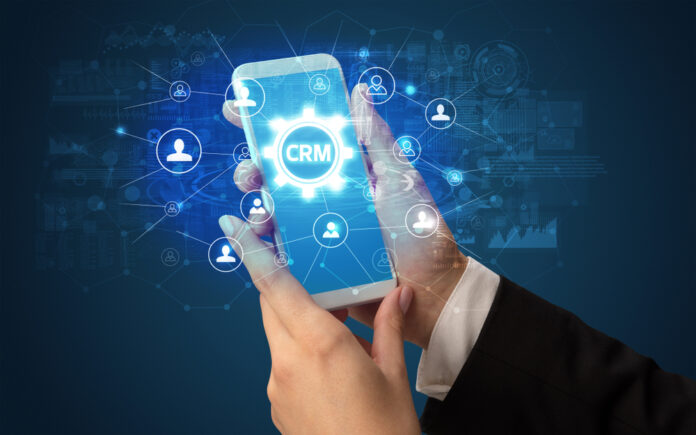CRM systems have fundamentally changed how businesses engage with and support their clients as well as how they collect, manage, analyse and use data for various purposes.
The journey of CRMs tells a story of ingenuity, flexibility and technological progress. Let’s start from the beginning to trace the development of CRM systems, from their origins to the platforms prevalent today.
The Birth of Customer Relationship Management (CRM)


The inception of CRM systems can be dated back to the 1970s when companies began acknowledging the significance of fostering customer relationships. Initially, CRM operations were manual: they involved notes, Rolodexes and spreadsheets for monitoring customer details, transactions and creating reports. Though basic in nature, these techniques set the groundwork for the evolution of CRM softwares.
At the same time, 50 years on, there are still mortgage broker firms relying on physical paperwork and spreadsheets, while new generations would like to do everything on their mobile phone. The mortgage industry, therefore, covers a wide range of attitudes, expectations and methods used.
Rise of Database Marketing


The 1980s witnessed a shift with the introduction of database technology that reshaped how businesses managed customer data. Database marketing emerged as a tool utilising customer information to personalise marketing campaigns and improve the efficiency of targeting.
Companies started developing databases to house customer details, paving the way for advanced CRM solutions in subsequent years.
Adding contact management
The 1990s witnessed the emergence of ‘contact management software’ aimed at simplifying the task of organising customer contacts and interactions. These early CRM solutions enabled businesses to consolidate customer information, monitor communication histories and plan follow-up actions. Although considered basic compared to today’s standards, contact management software represented a new aspect in the development of CRM systems.
Keeping track of clients for a business is crucial in understanding where leads are coming from, how they are dealt with, what the conversion rates look like, if there is repeat custom, and so on.
The role of the internet
As the internet gained traction in the 1990s and early 2000s, CRM systems progressed into integrated solutions that combined contact management, sales automation and customer service functionalities.
Companies like Salesforce, established in 1999, led the way in adopting the ‘Software as a Service’ (SaaS) model by offering cloud-based CRM solutions from any location with an internet connection. This transition towards cloud-based CRM systems made the proposition more cost-effective for businesses of all sizes.
Despite this new approach, there are still systems on the market in the UK mortgage broker industry, that don’t follow this model. Instead, they rely on local servers and downloading the software onto a nominated machine.
Expanding the scope of CRMs
From the 2000s through to the 2010s, CRM systems underwent further developments to widen their scope and offer functionalities beyond basic contact management and sales automation. Modern CRM platforms now include features such as marketing automation, lead management, analytics and social media integration, amongst others.
These new features have allowed businesses to gain an understanding of customer behaviour, tailor interactions and boost revenue growth.
At the same time, by integrating with other systems that offer related or complementary services, CRM systems can digitise whole business processes from start to finish. Instead of using different systems for subsequent tasks, now the workflow can be managed from the CRM alone. This solution reduces re-keying data, human error, saves time and can lead to greater automation as well.
The Rise of Mobile CRMs


The use of smartphones and mobile devices in the 2010s marked the beginning of mobile CRM.
CRM providers started creating apps that enabled sales representatives and customer service agents to access CRM data on the move facilitating collaboration and decision-making.
Mobile CRM solutions also enable businesses to maintain communication with their customers from anywhere thereby enhancing the customer experience. This is especially true for interaction with younger customers, who tend to use their mobile phone for an increasing amount of aspects of their everyday life.
A mortgage application process involves an enormous amount of detail. Fitting it into a mobile app or across several screens is no mean feat. Yet, today’s smart phones and apps can reduce the burden by enabling clients’ electronic signatures, biometric ID checks, automated credit searches, open banking, address look-ups and online property information checks to name a few. These functionalities all rely on digitised government and banking data sources as well as high level data security to maintain confidentiality.
The Impact of Artificial Intelligence and Machine Learning
In more recent times, artificial intelligence (AI) and machine learning (ML) have emerged as forces in the world of CRM. Some CRM providers are utilising AI and ML technologies to automate tasks, review or generate documents, communicate with clients, forecast customer behaviour and offer suggestions. These advancements can help businesses deliver timely interactions fostering customer engagement and loyalty as well as reduce admin time and promote efficiency within the business.
One example that many of us would have encountered is chatbots that use AI technology for managing online chats and directing calls. They may not know the answer every time, but can deal with less complex enquiries, thus saving time for their human counterparts.
What does the future hold for CRMs?


Looking ahead, the future of CRM systems holds tremendous potential for innovation. Emerging technologies, like augmented reality and the Internet of Things (IoT) are set to revolutionise the landscape of CRMs by providing new avenues (realities…?) for businesses to engage with their customers effectively.
Moreover, the ongoing fusion of AI and ML will enhance CRM systems to become more intelligent and predictive empowering companies to foresee customer needs and provide personalised service.
In conclusion
The journey of CRM systems, from manual operations to technological solutions has been truly remarkable. What initially served as a tool for managing customer interactions has evolved into a thriving industry that fuels business success globally.
Looking ahead, the significance of CRM systems in fostering client relationships between businesses and customers will undoubtedly continue to increase as well as the automation to reduce manual business processes.







